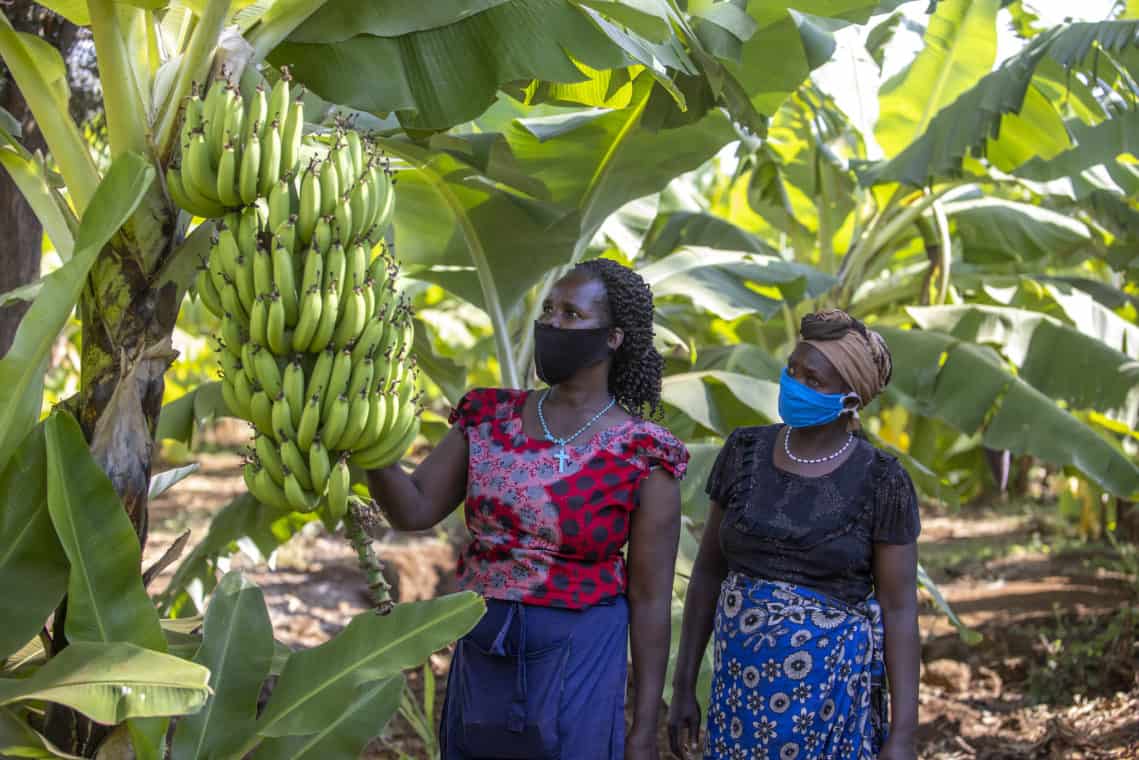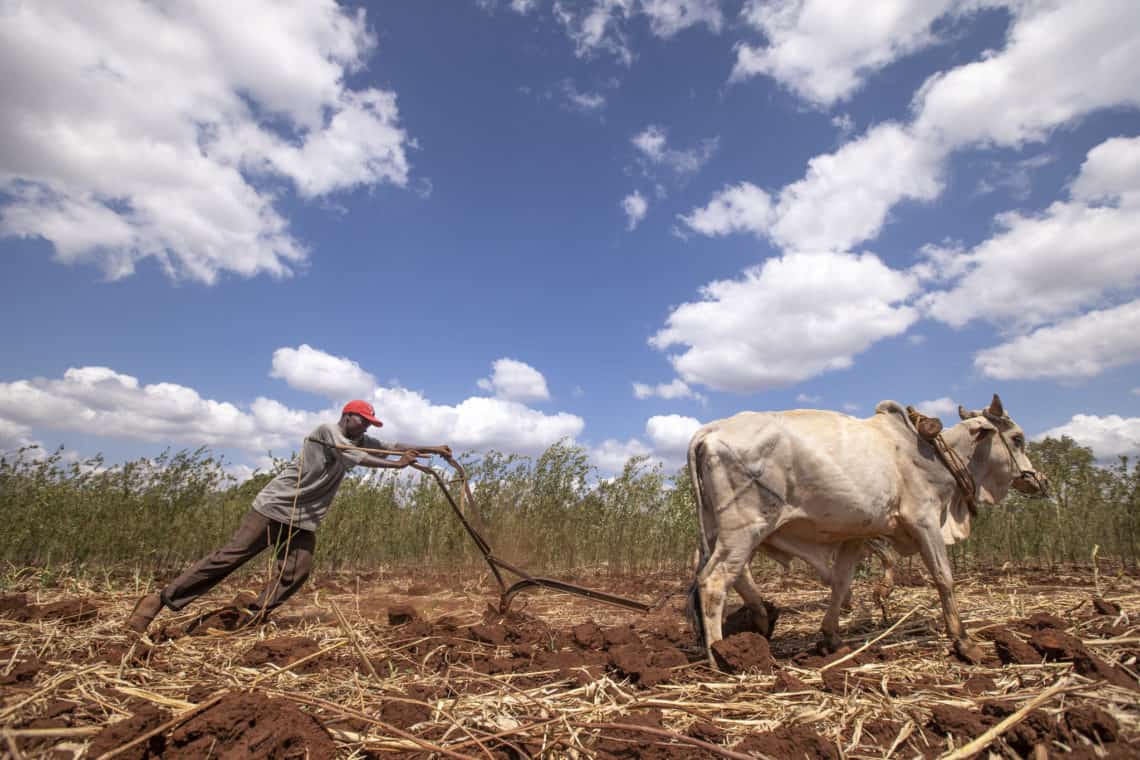Since 2015, conflict, climate change, and economic shocks have caused a steady increase in global hunger. And COVID-19 has only made things worse. What can the Canadian charitable and non-profit sector do to help?
Every year, as we observe World Food Day on October 16, we remember that more than 700 million people around the world are suffering from hunger. It’s a tough statistic to hear, but it doesn’t have to be that way. In fact, several years ago, hunger levels around the world were decreasing – wonderfully encouraging news, and something to celebrate.
But since 2015, conflict, climate change, and economic shocks have led to a steady increase in global hunger. And COVID-19 has only made things worse. As the world shut down, pandemic restrictions interrupted supply and distribution, making food less available and affordable. COVID-19 has been a multiplier and a magnifier of global hunger.
COVID-19 as a multiplier
A recent report by several UN agencies, including the Food and Agriculture Organization and the World Food Programme, captures the multiplier effect of COVID-19 on global hunger, as illustrated in the following findings. The estimated rise in the number of people facing hunger in 2020 was equivalent to the previous five years combined.
COVID-19 also multiplied geographic and gender inequality in global hunger. The proportion of people facing hunger in Africa, 21% of the population, was double that of any other region; 10% more women than men experienced hunger, a gender-gap increase of 4%.
It’s consistent with what organizations working to end hunger around the world are seeing in local communities and hearing from their staff and partners.
I recently heard about a woman who had been participating in an agricultural development project in Uganda … When the pandemic hit, and local markets were shut down, her inability to sell what she was growing meant she was struggling to buy food for her family.
Andy Harrington, Canadian Foodgrains Bank
Andy Harrington is executive director of Canadian Foodgrains Bank, a partnership of 15 churches and church agencies working together to end global hunger. Foodgrains Bank programs are implemented by local church and community agencies in developing countries that are familiar with local contexts and able to identify needs and issues within local communities. “In one of the projects we support in Uganda, I recently heard about a woman who had been participating in an agricultural development project,” Harrington says. “She’d been successfully feeding her family from the sale of the farm produce at her local market. When the pandemic hit, and local markets were shut down, her inability to sell what she was growing meant she was struggling to buy food for her family.”
COVID-19 as a magnifier
Like a magnifying lens, COVID-19 has revealed the precariousness of local and global food systems, highlighting where change is needed.
Lockdowns prevented or delayed the distribution of food to markets or processing plants, seeds and tools for planting, and the movement of farm workers. There was less food available both in quantity and variety, pushing food prices higher, even as many people lost their incomes.
A local partner providing emergency food assistance to Venezuelan migrants in Colombia’s Guajira Desert saw hunger increase in this area where people cannot grow their own food and depend on groceries delivered from the interior.
Andy Harrington
The impact of pandemic restrictions was felt more keenly in countries where governments were unable to quickly roll out adequate social-protection initiatives for the citizens most affected. Human Rights Watch found that “many African governments introduced measures like cash transfers and food assistance in response to the rising poverty and hunger occasioned by the pandemic, but most households received no support.”
In South America, Harrington says, “a local partner providing emergency food assistance to Venezuelan migrants in Colombia’s Guajira Desert saw hunger increase in this area where people cannot grow their own food and depend on groceries delivered from the interior. The pandemic restrictions led to loss of jobs and higher food prices that stayed high, causing food insecurity.”
A quick background on global hunger
The main cause of rising global hunger today is armed conflict. For three years running, from 2018 to 2020, the largest number of people experiencing crisis levels of hunger lived in three conflict-affected countries: the Democratic Republic of the Congo, Yemen, and Afghanistan.
Conflict causes hunger by disrupting the availability of food and people’s access to it, and by preventing humanitarian responders from reaching those affected with much-needed supplies and emergency services. Parties in conflict have used the supply or denial of food and humanitarian supplies as a strategy to punish their opponents or reward their supporters.
In the ongoing conflict in Yemen, both parties of the conflict have at different times denied food to get the population to surrender or have diverted humanitarian food assistance.
For example, in the ongoing conflict in Yemen, both parties of the conflict have at different times denied food to get the population to surrender or have diverted humanitarian food assistance. When hunger is used to advance conflict goals, it deepens suffering. In the extreme it leads to famine.
When armed conflict breaks out, many are forced to flee, quickly exhausting their means to access food. Those who remain can no longer safely move around to tend to their farms or buy food. Widespread violence shuts down markets and destroys infrastructure.
As well, conflicts today are lasting longer. For example, the Syrian conflict has been going on for more than 10 years, with no end in sight. Protracted conflict devastates local systems, with long-term health consequences for children, particularly those under two years of age.
Famine
Forty-one million people, more than the entire population of Canada, are at risk of starving to death in 2021 because of possible famine.
Famine is rare, and the process to declare it is rigorous, involving governments, aid agencies, and independent food-security experts. Typically, it’s declared when at least two people in every 10,000 are dying daily from starvation.
In the last decade, famine was declared in some areas of southern Somalia from August to September 2011, and in parts of South Sudan in January 2017. The famines were caused by drawn-out violent conflict that broke down food and economic systems, increased food prices, and, in Somalia’s case, cycles of drought.
Today, we are hearing more about the risk of famine, mostly because of protracted armed conflict and climate change, particularly in countries such as South Sudan and Yemen.
What can we do to end hunger?
In the short-term, there is an urgent need to save lives and prevent famine with more financial resources and more diplomacy for peace and humanitarian access to help end hunger.
Canadian non-profit organizations came together in 2020 to advocate for increased international assistance for a better Canada and a better world. Concerned about the 10-year decline in Canada’s official development assistance (ODA) as a percentage of gross national income, the sector will continue to jointly advocate for Canada to show solidarity and leadership in a hurting and hungry world.
In contexts where famine is looming, a funding shortfall is a death sentence.
In contexts where famine is looming, a funding shortfall is a death sentence. The cost of responding late or giving too little is far greater than giving more now. Famine has successfully been prevented in the last few years. The World Food Programme gives one example: “Two years ago, our largest-ever scale-up of food assistance — from one million people in 2015 to nearly 13 million in 2019 – helped avert famine in Yemen while providing a platform for the broader humanitarian community to strengthen their interventions.”
Here in Canada, the government has already committed to responding early to prevent famine. In May 2021, Canada and the other G7 countries adopted a Famine Prevention and Humanitarian Crises Compact. This compact recognizes the complexity of the crisis and includes short- to long-term interventions. Together the G7 countries will give more funding, negotiate for safe humanitarian access and protection of civilians, respond earlier to threats, strengthen crisis-vulnerable countries, and use better data and analysis.
Increased ODA will contribute to resolving some of the deeper roots of global hunger. To tackle the problem of not having enough nutritious food, we should support local food production. More than 70% of people who experience hunger are small-scale farmers, and about half of them are women.

By providing a helping hand to these vulnerable women farmers through training and support, we can help them face the challenges of variable weather and new pests.
Supporting nutrition-sensitive climate-adaptive agriculture and access to markets will improve the farmers’ harvests, incomes, and access to nutritious diets. Better harvests of diverse crops will mean more nutritious and affordable food for communities. Canadian civil-society organizations are jointly advocating for Canada to once again step up support for agricultural development.

However, ending global hunger is much more complex than just increasing financing, although that’s an important part.
Canadian non-profits engaged in international development in Canada have a critical role to play to make sure Canada increases diplomacy for peace and humanitarian access. For example, Canada can use diplomatic channels to advocate for governments around the world to implement UN Resolution 2417 to condemn starvation as a tactic of war and support humanitarian access so that supplies reach the areas most at risk. Diplomacy supporting peace in conflict-affected countries is crucial to ending conflict and ending hunger.
Advocacy is needed not just at the organizational level. All Canadians should reach out to their elected officials and share their views on Canada’s role in contributing to a better world. “Canadians shouldn’t underestimate the power of contacting our elected officials and sharing our support and concerns about Canada’s support for our international development efforts,” says Paul Hagerman, who directs public policy at Canadian Foodgrains Bank.
One example of such an advocacy effort is this digital letter encouraging Canadians to write to the ministers of environment and climate change and international development and ask that Canada increase its support for people experiencing hunger resulting from a changing climate.
Ending hunger may seem a too-lofty goal from today’s vantage point. But to the hundreds of millions who struggle daily to find enough nutritious food to eat, and to the tens of millions at the brink of famine, ending hunger is their only hope.


